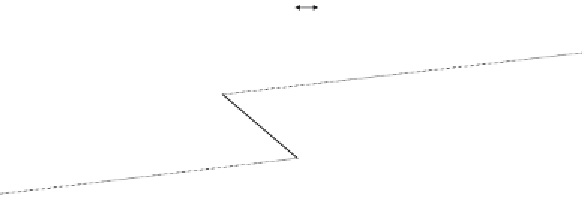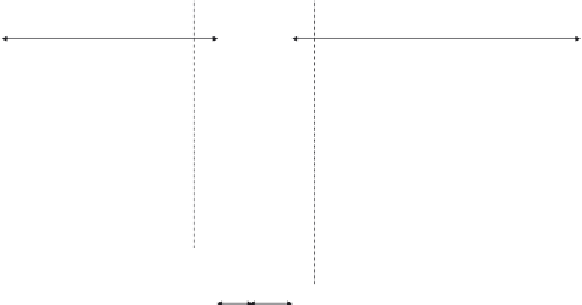Civil Engineering Reference
In-Depth Information
4.6.3.6 Calculation of Force in the Diagonal Chord Member D
4
To determine the force in the diagonal chord truss member D
4
(see
Figure 4.185
) using the influence line method, we can follow the simple
procedures of putting a unit concentrated moving load at point a adjacent
for the other side of section
s
-
s
to calculate the force in the member. Then,
we put the unit concentrated moving load at point b adjacent to section
s
-
s
shown in
Figure 4.185
and study the equilibrium of the truss for the other
side of section
s
-
s
to calculate the force in the member. The influence line of
the diagonal member consists of two triangles as shown in
Figure 4.185
hav-
ing different signs. After that, we can put the previously calculated dead and
live loads acting on a main truss in the longitudinal direction. It should be
noted that the live loads can be put on the negative or positive triangle to
produce a compressive or tensile force, respectively, while the dead loads
must be put on both triangles. Once again, the total force in the member
will be the summation of concentrated loads multiplied by the companion
vertical coordinate in the diagram and the summation of the distributed loads
multiplied by the companion area in the diagram. Hence, the forces due to
the dead and live loads can be calculated as follows:
s
a
D
4
Fsin
a
4 m
B
A
b
s
15 m
5 m
20 m
g
vk
= 77.1 kN/m
450 kN
450 kN
q
vk
= 45.65 kN/m
450 kN 450 kN
1.2 m
q
vk
= 45.65 kN/m
1.2 m
1.6
0.6
0.552
+
-
0.8
0.752
1.6
2.14 m
4.86 m
Figure 4.185 Determination of the force in diagonal member D
4
using the influence
line method.


























































































Search WWH ::

Custom Search